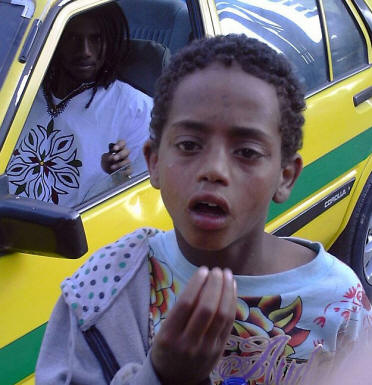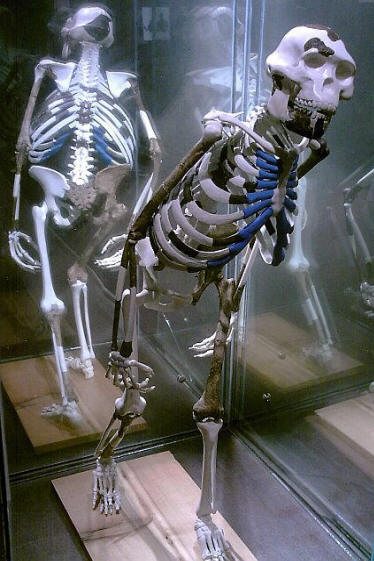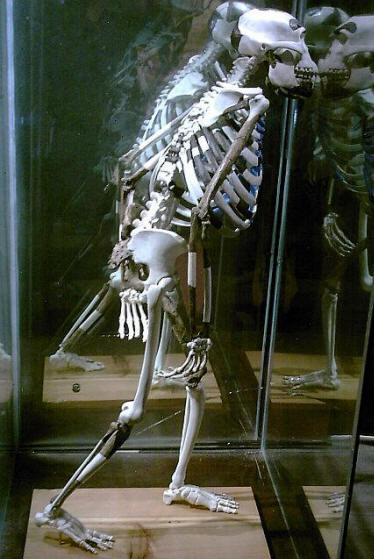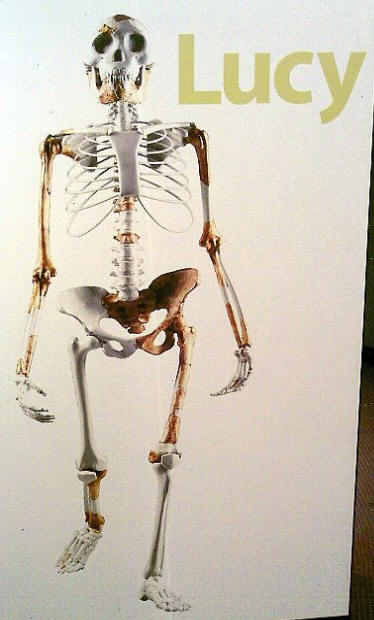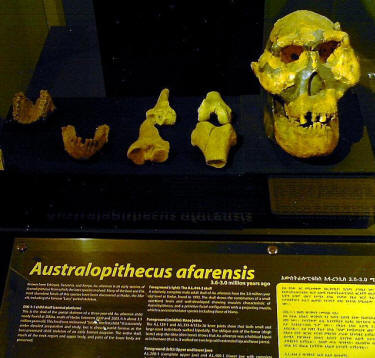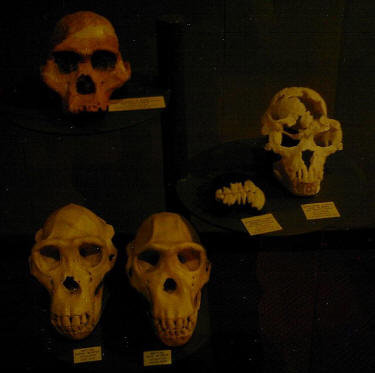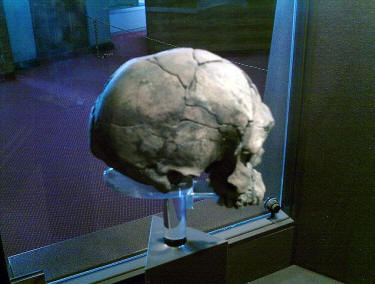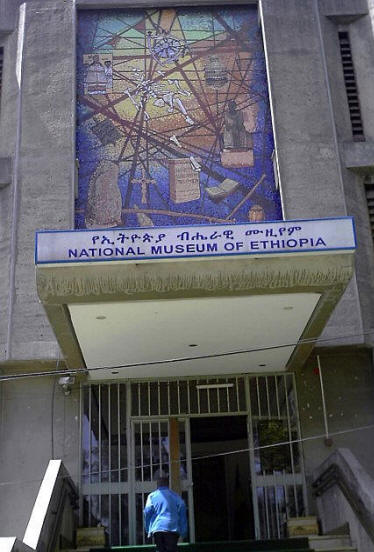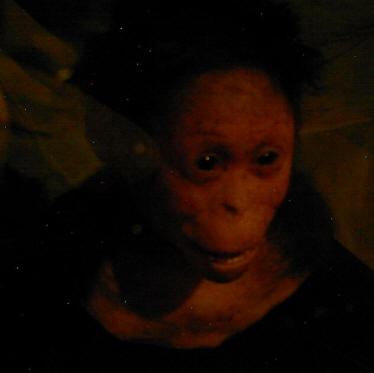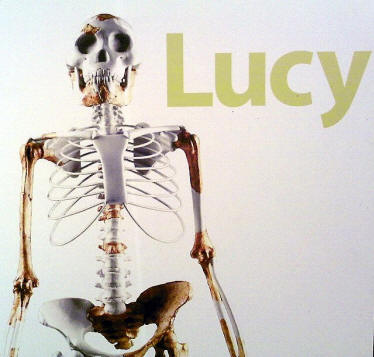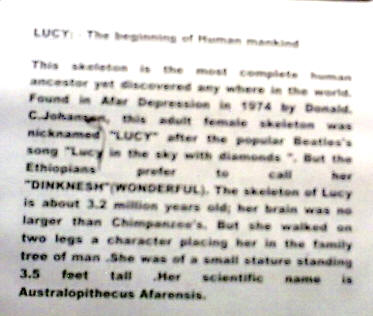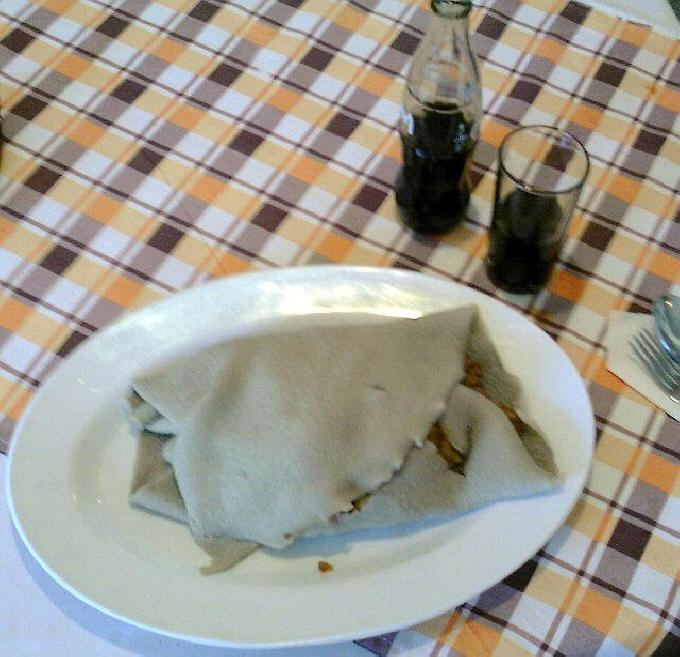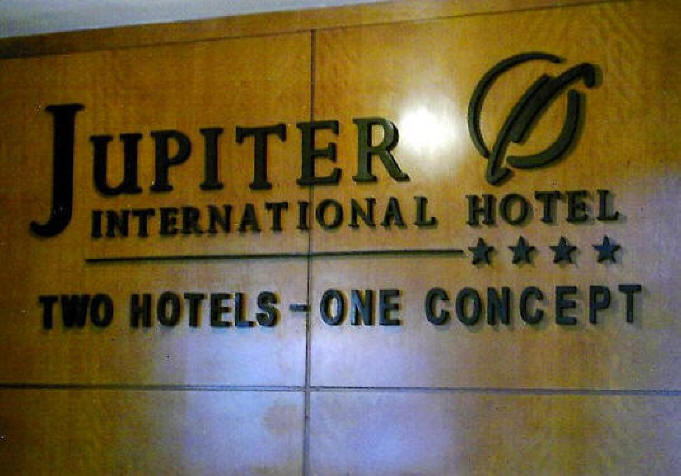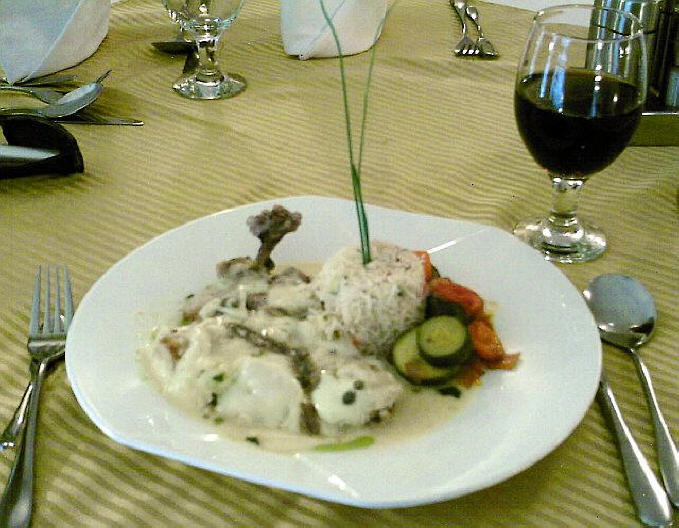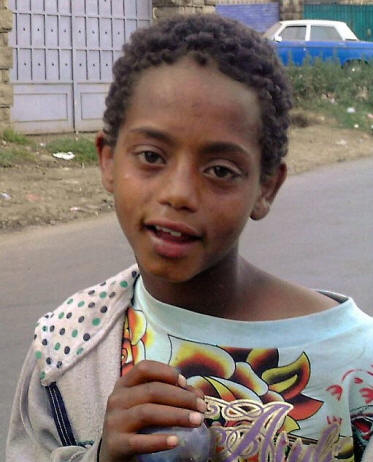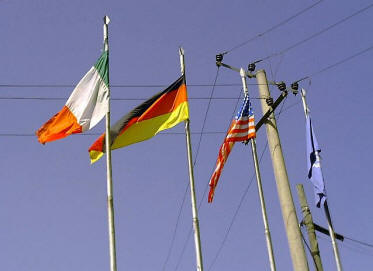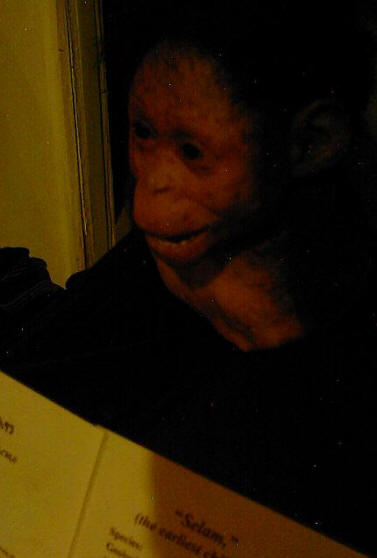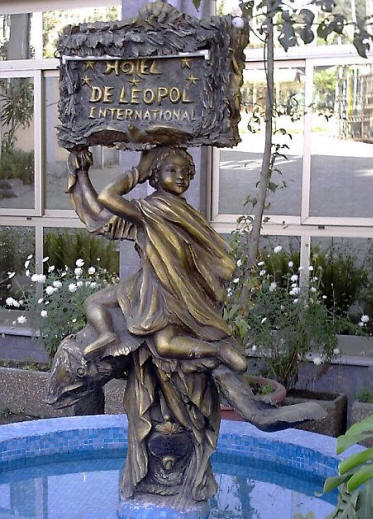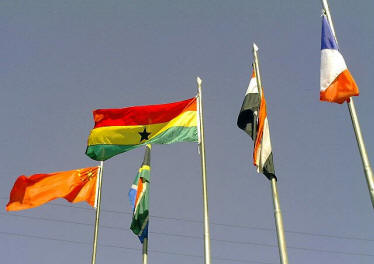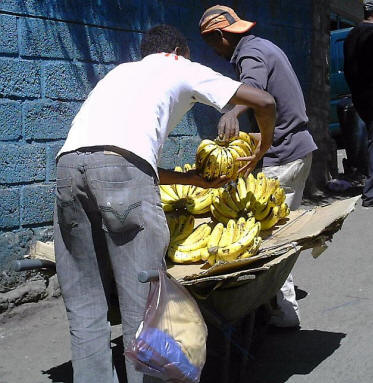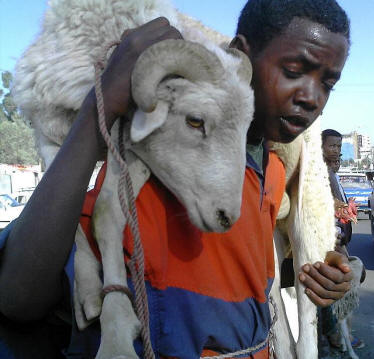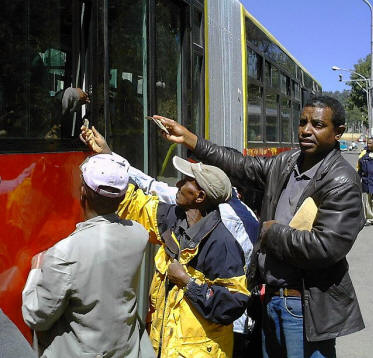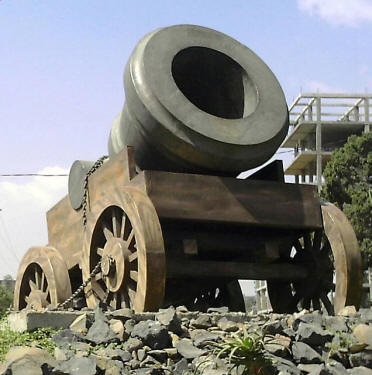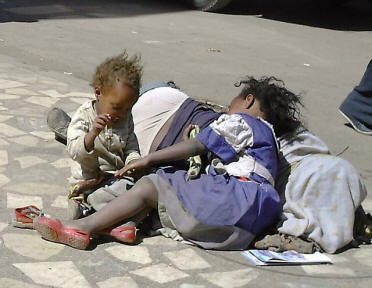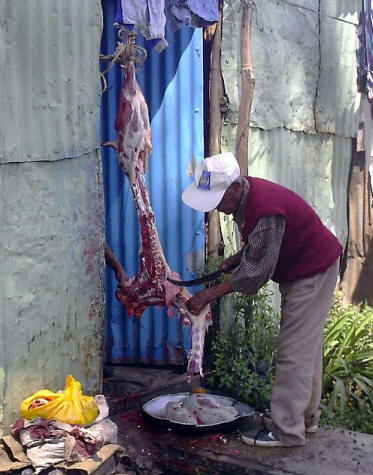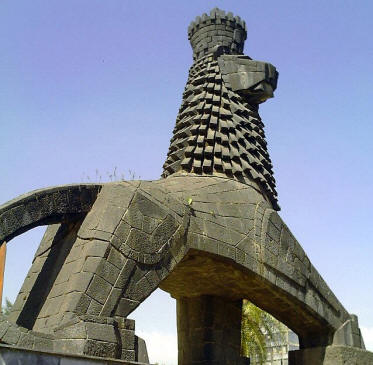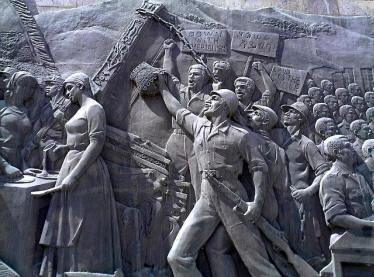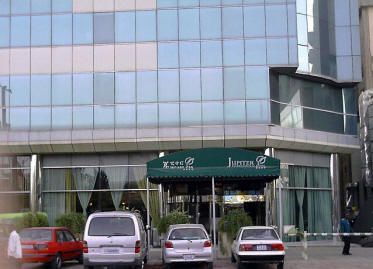



|
Postcards
from:
Las Vegas Nevada Algeciras Spain Rabat Morocco Madrid Spain Yaounde Cameroon Douala Cameroon Addis Ababa Ethiopia Addis Ababa Photos Lalibela Ethiopia Axum Ethiopia Gondar Ethiopia Bangkok Thailand Las Vegas Nevada
|
Hello from Addis Ababa Ethiopia
COFFEE Before this trip the first thing that came to mind when thinking of Ethiopia was the aroma of coffee. I have always associated coffee with Ethiopia, that being the place it first came to the attention of human beings. As a herd of goats eating the berries and getting frisky made the goatherds aware of the stimulating properties, I must assume goats and possibly other animals knew about "coffee" long before their human companions. So far all I have been able to discover are the told and retold legends of its discovery. Interestingly, the coffee served in my hotels has been of uneven quality with coffee dregs usually remaining in the bottom of the emptied cups from the primitive ways Ethiopians brew it; they do not decant their coffee. There are no Starbucks coffee houses here... in fact, there are very few Western franchise operations of any kind here... unless you count the Missouri Starbucks copycat, Kaldi's Coffee which does have several outlets in Addis. Oh, what I'd give for a juicy Big-Mac and frothy cappuccino occasionally. After learning of the traditional Ethiopian Coffee Ceremony, I couldn’t help but notice that it has a lot in common with the Tea Ceremony performed in Japan. In the days leading up to the holidays ladies line the streets in certain parts of the town selling bundles of green grass about two feet long. Mystified for a while, I learned the grass is used in the Coffee Ceremony rituals; it is scattered around on the floor of the room being prepared for the solemn coffee festivities. As floors in many rural Ethiopian homes are often only packed dirt, it would add a touch of elegance, no doubt. One of my Ethiopian informants told me the green grass is a symbol of renewal and hope and is scattered around whenever people want to direct attention to the promise of better times, like religious holidays. I have seen such grass scatterings near the entrances to several churches during these Christmas holy days.
Addis Ababa sits at an altitude of 8000 feet, somewhat
higher than Big Bear Lake where I lived for so many years. The first
couple days I caught myself breathing deeply involuntarily, sometimes
awakening with a gasp as my body urgently screamed for more oxygen. Now
weeks later the lungs have accommodated to the lower life sustaining
oxygen levels and I breathe normally without effort. While searching the
Web I found this useful
Welcome to Addis Guide, complete with good maps and this
tourist
information site. After returning home I found this marvelous
travelogue
CAMEROON DECISION
Continuing on eastward around the world has always been
an appealing idea and would provide another opportunity to stop in at
the Bumrungrad Hospital in Bangkok for my irregular “annual” physical
checkup. Ethiopia has been on my short list for decades and this option
meant a stop there would fit right into such an itinerary. So, on 23
December I hopped on an Ethiopian Airlines plane and headed east for
Addis Ababa
The first night on landing I walked fifteen kilometers through the dark streets to the city center area as is my foolhardy habit. Starting about 20:30 in the dark I hadn't found lodging that felt right after three hours despite being approached by several dozen "helpful" souls all of whom spoke English. Totally exhausted and shivering from the chill even in my down vest, I vowed the next hotel I found, no matter how crummy, would be the place I stayed for the remainder of that first night... and serendipity struck again. Poorly marked until I stood directly in front of the place located in a dusty high-rise construction area without sidewalks, the five star Addis Ababa Intercontinental Hotel would clearly meet my minimum standards for cleanliness and amenities... but at what price. Still, a vow is a vow. Lucky for me they were featuring special discounted holiday rates... only $170 per night, more than twice my budget. I bit my tongue, sucked in the opulence and took a room. On first arriving in any new city I often stop at five star hotels knowing they will usually offer information about their city, sometimes providing excellent maps and will always cheerfully direct me to more "affordable" lodges nearby... to quickly get me and my scruffy backpack out of their fancy digs I imagine. But, this first night I'd allow myself to get the full treatment and be pampered. After all the skimpy meals in Cameroon, the lavish buffet breakfast alone would make the splurging worthwhile. The next morning after gorging myself I received information about an obscure guest house located in the building directly adjacent to the Intercontinental which I had walked past the night before without any awareness of its existence. The “room” in the Nigist Towers Guest House is actually a quite nice studio apartment with a little kitchenette and the rate is only $60 per night (without breakfast). BUT, the darned Internet didn't work, so after only two nights I moved to my present abode, the fabulous, four star $100 Jupiter International Hotel where they offered me a special long term holiday rate of $70 including a big buffet breakfast. Ethiopians celebrate Christmas on January 7th, so Western visitors see two Christmas days in the country, especially in the international hotels. New Year's Eve came and went without any noticeable fanfare other than people enjoying an extra day off from work. I've learned Christianity in Ethiopia is unique in the world, the church retaining elements of its old Jewish origins (like avoiding pork) and following a different calendar... which accounts for the different days for observing holy days like Christmas. Customs differ too: few presents are exchanged with the exceptions being a few token gifts for the children. People get up in the wee hours to attend a 4AM mass and dress in all white clothes for church I am told... I wouldn't know for sure as at that hour I still snuggled under the duvet, though later in the day I did see a majority of people wrapped in white.
ANIMAL MARKET Ethiopians are unbelievably friendly. I pass hardly anyone on the street who doesn't greet me with a few words in English. In certain places the greeting is immediately followed by an outstretched hand and a torrent of pleadings in Amharic, the national Ethiopian language which most native people speak. A majority of the kids I meet on the streets clearly have learned verbatim a few useful English phrases like: "HARlow." or "Welcome." and then inevitably "Want MONee." or "Give MUNee." Most are not obnoxious or persistent, but the incessant encounters still are humbling. This morning a well dressed, well groomed, well fed boy about fifteen years old on the way to church with his family surprised me with a stream of the standard phrases in English ending with the begging. I have to wonder if he actually understood what he had done! It seemed so out of character given the upscale appearance of the family. Last Friday, the Muslim holy day I wandered the Grand Market area or Merkato where beggars constituted a majority of people on the street. I couldn't walk more than a few feet without being accosted by a beggar! It turns out Muslims are especially generous on Fridays around the Mosques and the beggars take advantage of that predictable fact, dominating the area with their presence. It is not only in the Merkato that I am accosted by hoards of beggars. They are everywhere and of all ages and of both sexes. Local people seem to be particularly generous with them and I have seen three people walk up to beggars like they knew them with an outstretched arm for a handshake and surreptitiously leave some money with the handshake. Discussing the avalanche of beggars with one Muslim Merkato store owner he noted most of these people can’t find work and have no other alternative but to beg. When he learned I am from America, he volunteered that he “hates Bush.” I reminded him we now have a new president, Obama and wondered what he thought of him. “He doesn’t have any power so he can’t do anything.” was his reply. As I passed one of the several mosques in the Merkato grand market I listened as the imam chanted the liturgy to an uncharacteristic melody and in a language which must have been Amharic; it certainly wasn’t Arabic. One of the country’s problems is the unavailability of foreign exchange; one sees very little foreign merchandise in the stores. There are no western fast food franchise restaurants like Mac Donald’s or Burger King. There also are no mosquitoes! There are signs posted prominently in establishments throughout Addis Ababa warning patrons to not pay unless they are given a receipt for the amount. At one point I just wanted a bottle of mineral water and tossed the marked purchase price down on the counter and started to walk out with the water. Pandemonium erupted as several people in the shop started jabbering in different languages making it clear I must not leave until the formalities had been completed. Finally, one of the guys who spoke a bit of English explained that the store owner could be arrested if he failed to give me a receipt when accepting my money! Boy! Ethiopia takes extreme measures to deter corruption… even for a fifty cent bottle of water.
TRADITIONAL HEALERS The doctor was out, but we were allowed to wander the grounds and examine "medicine" storage shelves, the doctor's office through a large window, and the dirt floor waiting room. Dr. Mamo's office clearly suggests a man with a long and illustrious professional background. His large cluttered desk ran the length of the office like a conference table covered with numerous piles of papers and projects in progress. On the wall behind the desk hung dozens of framed plaques containing testimonials and achievement certificates of various kinds plus framed photographs of Dr. Mamo with various celebrities including Emperor Haile Selassie! Scattered around the dirt surface of the courtyard on a large drop-cloth were a dozen disk shaped "loaves" of the traditional flat bread known as injera. On another cloth a pile of some herb lay drying in the sun. The doctor's assistants volunteered information about the healer and indicated the great man would surely want to meet the foreigner, but would not be in the office until the following morning. Checking the Internet I discovered many citations which mentioned the healer, Mamo. Several related biographical details of his involvement in the Italian wars and his association with the emperor Haile Selassie. One must wonder if the healer's fame is the result of successful patient cures or his reputation as a great patriotic hero and confidant of the emperor. One day I walked up to the National Museum where the remains of “Lucy” are kept on display for the public. Seeing the actual collection of bones and reconstruction of the full creature I am amazed how small our earliest ancestor was. The Lucy room contains various other archeological finds and explanations of what we know about our forbears from the bones. To experience the real Ethiopia I had lunch at Tamirat Abshere, a small restaurant across the street from the Jupiter Hotel. The traditional food is unusual, delicious and cheap. The story of Africa is the story of poverty and the story of poverty cannot be told without focusing on the high birth rates on this continent. The significance of overpopulation is graphically demonstrated in this entertaining TED talk I just discovered: Hans Rosling on global population growth. Part of the problem is short life expectancy. Here in Ethiopia it is around 54 years for males compared to over 76 years in the United States. In a couple days I'm headed up to Lalibela, the region famous for rock hewn churches and then on to Axum in my personal quest for the Holy Grail and after that to Gondar and its castles. More when I reach a new destination.
|
 Addis Ababa Ethiopia: Map of Africa showing the location of Ethiopia with Eritrea to the north and Somalia to the east.
|
